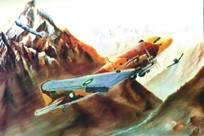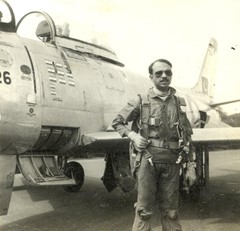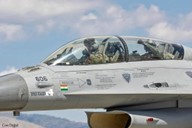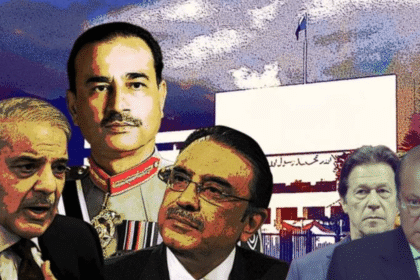Humble Beginnings
When the Royal Pakistan Air Force was established on August 15th, 1947, it had very little in terms of aircraft inventory. They were allotted a share of the World War-era fleet of the Royal Indian Air Force, but these aircraft were in terrible condition, and most weren’t even physically present in what became Pakistan. There were deliberate acts of sabotage on the aircraft that were sent over by the Indians, and their effectiveness was further hampered by a lack of manpower for the PAF. It was in this exact shape when the Quaid-e-Azam—who had been cognizant of the need for an air arm in a nation’s defense as far back as 1936—addressed some of the very first officer cadets training at what is now the Pakistan Air Force Academy on 13th April, 1948. The opening paragraph of this speech has since been enshrined as the guiding principle of the PAF:
“There is no doubt that a country without a strong Air Force is at the mercy of any aggressor. Pakistan must build up her air force as quickly as possible. It must be an efficient air force, second to none.”
– Quaid-e-Azam Mohammad Ali Jinnah (Speaking at RPAF Flying School Risalpur, 13th April 1948)
The first engagement of the nascent air force came in the valleys of Kashmir when in November of 1948 a C-47 Dakota transport aircraft was intercepted by Indian fighters and told to land at Srinagar. The Pakistani pilot refused to give up one of the two transport aircraft in the PAF fleet at the time, and the Indians opened fire, killing one crew member and injuring another. The plane, however, landed back in Pakistan safely, and Flying Officer Mukhtar Dogar (the pilot) became the first recipient of the Sitara e Jurat for his courageous actions under fire.

(Retd.) S. M. A. Hussaini
Into the Jet Age
Guided by the words of the Quaid and threatened by India’s expansion of the IAF, Pakistan began seriously equipping itself for air combat in the 1950s, with the PAF entering the jet age in 1951 with the introduction of the British Supermarine Attacker aircraft. The PAF also acquired American-made F-86 Sabres, F-104 Starfighters, and B-57 Canberras in the lead-up to their next engagement, which gave it the teeth with which to confront a larger foe.
In the Indo-Pak war of 1965, the PAF outclassed the much larger IAF in every possible way, setting examples that live on in aviation lore across the subcontinent. Air Commodore (Retd.) Najeeb Ahmed Khan, then the commander of Number 7 Squadron at Mauripur, raided Adampur Airbase near Jalandhar and flew 8 passes over the heavily defended target, dropping each of his eight bombs at a visually selected target; he was given the Sitara e Jurat by the Government of Pakistan and the nickname 8 Pass Charlie by Indian officers. Air Commodore (Retd.) Muhammad Mahmood Alam, another recipient of the Sitara e Jurat, shot down 5 Indian fighter jets in a single engagement, becoming the first post-war ‘ace in a day’ and the first pilot to achieve the feat in a jet aircraft; the achievement is commemorated every year in Pakistan as Air Force Day on September 7th.

In the 1980s, under threat from Soviet forces in Afghanistan, which were bombing refugee camps inside Pakistani territory, the PAF equipped itself with American-made F-16 Fighting Falcon aircraft and went on to make these raids a costly affair for the Russians. At least 8 Soviet aircraft (6 fighters, 1 ground attack aircraft, and a transport) are confirmed to have been downed by Pakistani F-16s, with only a single aircraft lost by PAF, and that too to friendly fire.

Standing on their own two feet
Following the deterioration of relations between the United States and Pakistan in the 1990s, the PAF made extensive efforts towards self-reliance and indigenization. Overhaul and maintenance facilities were developed for French Mirage aircraft as well as Chinese F-7 Skybolts at the Pakistan Aeronautical Complex (PAC) in Kamra. The PAC is also where Pakistan developed its first indigenous fighter aircraft, the JF-17 Thunder. An economical multirole platform, the JF-17 is increasingly forming the backbone of the PAF fleet, replacing aging Mirages and Skybolts.

The Situation: Today’s PAF
The PAF has also made efforts to acquire force multiplier aircraft such as aerial refueling tankers, airborne early warning and control system (AEWACS) aircraft, and electronic warfare (EW) platforms. These aircraft gave the PAF a decisive advantage in their latest aerial engagement with India in February of 2019, when the PAF struck targets inside Indian territory in retaliation to an Indian strike. Pakistani AEWACS aircraft were able to guide fighters from forward positions with greater situational awareness while Pakistani EW aircraft jammed Indian communication signals. Pakistan claims two Indian kills from that day, with one of the pilots even being captured after ejecting into Pakistani territory.

2019
More recently, Pakistan has acquired Chinese J-10C fighters as a 4.5th-generation counterbalance to India’s acquisition of French Rafale jets. The PAF has also put great focus on unmanned aerial vehicles (UAVs) with the development of an indigenous drone program that has produced platforms such as the Shahpar and Burraq platforms. Turkish and Chinese UAVs such as the Bayraktar TB-2 and Wing-Loong II have also been acquired to boost the PAF’s combat capabilities. The Pakistan Air Force is also slated to become the first fifth-generation air force in the subcontinent, with the Chinese J-35 Gyrfalcon stealth expected to enter service.

The story of the PAF is very much that of David facing a much stronger Goliath in the field of battle. The exceptional training of their pilots, the advancements and expertise developed by their engineers and support crew, and the technological edge they continue to maintain over the IAF ensure that they remain a potent force, truly second to none.
















